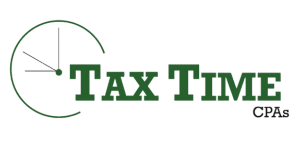Track Records
Having a side hustle is nothing new. People have worked multiple jobs for years to either help pay bills, save extra money, or learn a new skill. COVID-19 expanded upon the gig economy as it presented opportunities for people to pick up extra remote work and become independent contractors. The gig economy became so popular during COVID-19 that the American Rescue Plan Act of 2022 implemented new provisions allowing the IRS to seek taxes on anyone receiving $600 per year on Cash App, PayPal, Facebook Marketplace, Zelle and Venmo. Those apps must now submit a 1099-K to users who meet those criteria.
Freelancing, running a small business, MLM and second jobs provide the financial freedom many need to live their desired lives; however, reporting that income – however small it may be – is critical.
Before you start, look at the ideas we’ve laid out. Learn about the payment thresholds, income tracking and reporting cash payments. Then, call us so we can help you find deductions and reasonable ways to save on your overall tax burden. The idea of having a side hustle is to make money to live the life you want, not to find yourself unexpectantly burdened by the IRS.
Report Income
If you are one of the millions working within the gig economy, you likely received payments totaling more than $600 for the year. Companies and individuals paying you are supposed to provide you with a Form 1099-NEC for nonemployee compensation. You will also receive a 1099-K from the cash services apps. These forms are reported to the IRS when they are sent to you. There is no getting around the reporting requirements.
Non-employee compensation
Even though employers are supposed to send you a 1099-NEC reporting what they paid you and the withholdings – if any – were taken, some fail to do so. Regardless, you are on the hook to report that income to the IRS. Failing to pay the necessary taxes can lead to audits, penalties and fines.
Those penalties aren’t worth it.
If the IRS determines that your tax liability is substantially underreported, they can fine you a penalty equal to 20% of your underpayment. Their definition of ‘substantial’ truly isn’t. If your underreported tax liability exceeds 10% of the tax you should pay – or $5,000 – the fines skyrocket.
They won’t stop there. An audit can cost you thousands in tax-related services, not to mention additional fines for self-employment tax will also apply. Missing just a simple $5000 can cost you that money and more.
How to file 1099’s
Filing your taxes for a side hustle isn’t incredibly different from your primary income source. That is unless the work is incredibly different. If they are different, you may need to complete and include a Schedule C for each type of income category. Once complete, you transfer the net earnings that appear on this schedule to Form 1040 and Schedule SE for calculating self-employment tax. Don’t worry, at Tax Time CPAs, we make filing easy and can set up the necessary schedules for your tax filing paperwork.
The gig economy isn’t the only one on the hook. Those with a rental property are also required to report their earnings similarly.
These rents or royalties are reported on the newly reformatted 1099-MISC and likely require a Schedule E, Supplemental Income or Loss that transfers to Form 1040.
Finding deductions to reduce your tax burden
Business expenses reduce your taxable income, lowering your tax bill. As a gig economy worker, you can deduct certain expenses from your self-employment income, which you can’t do as a W-2 employee. For instance, rideshare drivers can track vehicle mileage, maintenance, gas and insurance. Graphic designers can report required software licenses or equipment used exclusively for a side hustle.
You must first determine which ones qualify. An ordinary expense is common and accepted – required for you to do the job. A necessary expense is helpful and adequate for your business, maybe not necessary for the job itself but required for the facilitation of your work.
Common side gig deductions – either partial or full – include things such as:
- Car mileage related to business use
- Dues and subscriptions
- Tools and equipment
- Tuition for work-related education and training
- Software, technological tools and access
- Home office tax deduction
Home office deductions
To claim home office deductions, your work must meet the following criteria:
- Exclusive and regular use: A portion of your home or property is used exclusively for your side hustle. This is true whether you live in a house, apartment, condominium, mobile home, or boat, and applies to outbuildings such as a garage, barn, or workshop.
- Principal place of business: Your home office must be the central location for business activities. If you’re a tradesperson such as a general contractor, who can’t perform your work from one location, it can be the place you regularly use for administrative work such as bookkeeping or client meetings.
The gig economy is alive and well. There are many opportunities to apply your time, energy and skills toward a side hustle to earn more money, pay off debt and save for a rainy day. Talk to us at Tax Time CPAs before you get started, so we can ensure your second – and maybe even third – jobs are properly structured so you can avoid unnecessary consequences. Focus on your business, and we will focus on the IRS.

